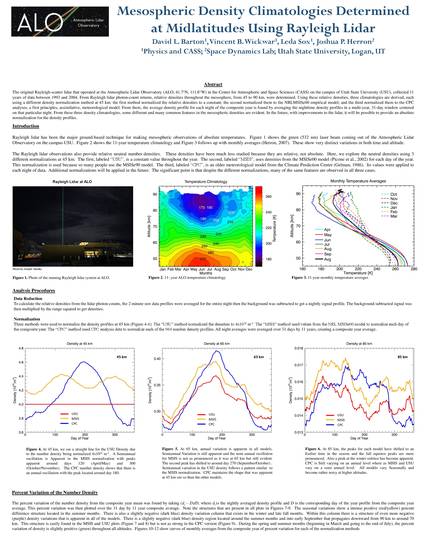
The original Rayleigh-scatter lidar that operated at the Atmospheric Lidar Observatory (ALO; 41.7°N, 111.8°W) in the Center for Atmospheric and Space Sciences (CASS) on the campus of Utah State University (USU), collected 11 years of data between 1993 and 2004. From Rayleigh lidar photon-count returns, relative densities throughout the mesosphere, from 45 to 90 km, were determined. Using these relative densities, three climatologies are derived, each using a different density normalization method at 45 km: the first method normalized the relative densities to a constant; the second normalized them to the NRLMSISe00 empirical model; and the third normalized them to the CPC analyses, a first principles, assimilative, meteorological model. From there, the average density profile for each night of the composite year is found by averaging the nighttime density profiles in a multi-year, 31-day window centered on that particular night. From these three density climatologies, some different and many common features in the mesospheric densities are evident. In the future, with improvements to the lidar, it will be possible to provide an absolute normalization for the density profiles.
Available at: http://works.bepress.com/vincent_wickwar/121/

Poster presented at the 2013 International Association of Geomagnetism and Aeronomy, Merida, Mexico.